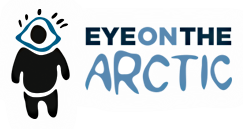Whitehorse hospital making improvements after equipment sterilization problems

Newly released report makes more than a hundred recommendations to improve hospital systems
Water and steam quality are to blame for a months-long equipment sterilization issue at Whitehorse General Hospital that triggered the cancellations of nearly 150 surgeries and cost hundreds of thousands of dollars.
A report released Monday details a review of the issue that caused residue on surgical instruments from the end of January to early April. The 363-page report, written by third party contractors, provides over one hundred recommendations to improve hospital infrastructure.
Tiffany Boyd, CEO of the Yukon Hospital Corporation, says three-quarters of those recommendations are already underway.
“We wanted not only to resolve the issue in a very thorough and complex way to protect our community and our population for the future, but we wanted to build redundancy. Because we’re a rural and remote site, having redundant capacity is really important,” Boyd said.
Extra sets of equipment purchased
The Whitehorse hospital has been back to its full surgical capacity, and completing its own sterilization on site, since April 7. It uses reverse osmosis treated water in a final rinse of equipment to ensure instruments are properly clean.
To plan for any future emergencies, the hospital has purchased extra sets of equipment and staff have developed a system to sterilize equipment off-site if necessary. It involves packaging the instruments, sending them to Vancouver where staff sterilize them, re-pack them in sterile packaging, and return the equipment to careful airline staff who ensure the instruments arrive back to Yukon intact.
“That pathway now exists and we can use it anytime we need,” Boyd said.
The hospital is also working on implementing other recommendations, including installing a reverse osmosis system and ultrafiltration systems — two methods of treating water. The report also recommends installing new water softeners, discarding expired supplies, keeping the door to the sterile storage room closed and better marking clean and soiled supplies.
In the two months of sterilization issues, the hospital cancelled 165 surgeries. Most of those, 135, were cataract surgeries because the small equipment is too fragile to be transported for sterilization offsite.
Further costs anticipated
Dr. Alex Kmet, the chief of medical staff with the Yukon hospital corporation, said the disruptions had a major impact on patients and doctors having to make those decisions.
“Deciding and recognizing that you have to preserve equipment for a potential emergency, knowing that there’s a person scheduled and then deciding ‘is it OK for me to go ahead or not’ that is a profound moral and ethical issue on the providers,” he said.
“I have so much respect for my colleagues who navigated that.”
Boyd said the issues cost about $500,000 total, with the money being spent on shipping instruments for offsite sterilization, buying more equipment and consulting fees. She said there will be further costs to implement the consultants’ recommendations and improve their infrastructure, but the hospital corporation will work with “partners” to ensure cost isn’t a barrier.
With files from Elyn Jones
Related stories from around the North:
Canada: Locums aren’t the only ones who need incentives, says N.W.T. doctor, Eye on the Arctic
Greenland: Greenland to reduce services amidst staffing shortages in health care system, Eye on the Arctic
United States: Senators, including Alaska’s, sound alarm on cuts impacting Indigenous health care agency, Eye on the Arctic



